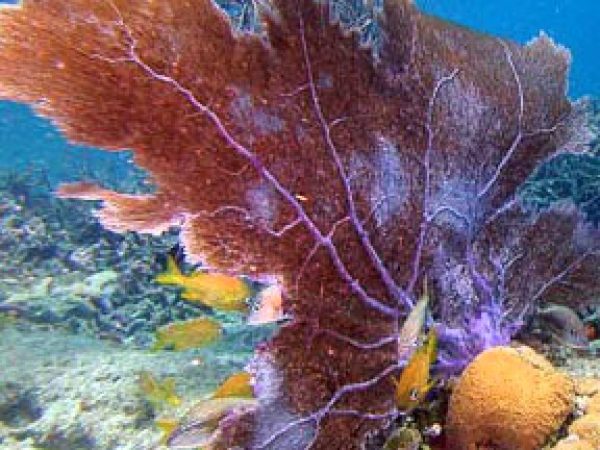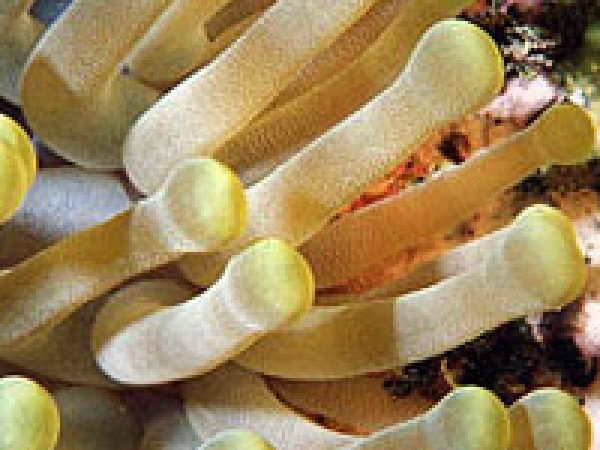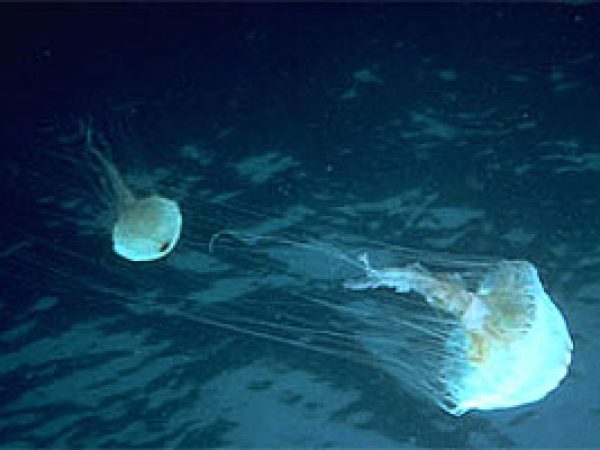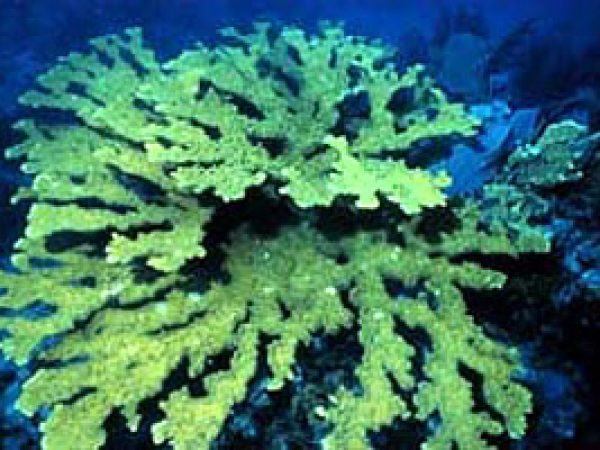What is a Coral Reef?
- Coral colonies made of many individual coral polyps
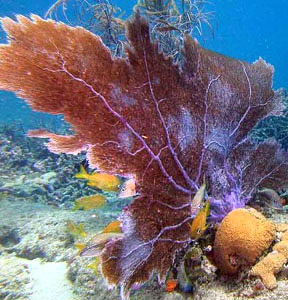
Florida Keys reef scene. Photo © Doug Weaver, U.S. Geological Survey - Corals produce calcium carbonate skeletons
- Symbiotic algae provide nutrition to corals
Coral reefs are among the most diverse communities on this planet, often described as “rainforests of the sea”. Reefs occur in clear, shallow waters throughout tropical regions across the globe. Formed by the calcium carbonate skeletons, the backbone of the reef is built by tiny coral animals that make up large coral colonies.
Coralline algae produce calcium carbonate, which cements the coral skeletons together, forming the continuous reef structure. The skeletons of tube worms, mollusks, and other organisms also become incorporated into the reef.
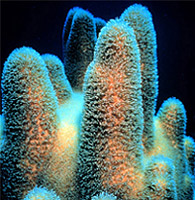
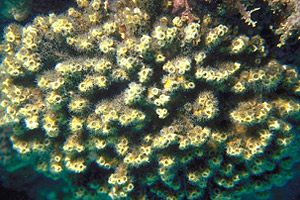
Importance
Reefs provide habitat and nursery areas for many organisms.
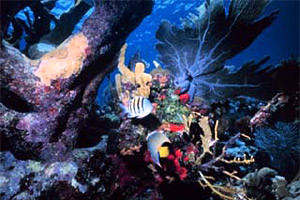
Coral reefs are important habitat and nursery grounds for fishes and invertebrates, including those of commercial and recreational value. They are closely associated with mangrove and seagrass communities, providing protection from wave and storm damage. Disturbances to reefs may result in upsetting the ecological balance of the reef as well as having indirect impacts on other nearby habitats.
Scientific Classification
- Corals are part of a group of organisms called Cnidarians
- Phylum Cnidarian includes Hydrozoa and Anthozoa
The classification Cnidarian includes:
 Sea fans. Photo courtesy Doug Weaver/U.S. Geological Survey
Sea fans. Photo courtesy Doug Weaver/U.S. Geological Survey Sea anemones. Photo © Mark Younger
Sea anemones. Photo © Mark Younger Jellyfish. Photo courtesy NOAA
Jellyfish. Photo courtesy NOAA Reef-building coral. Photo courtesy Paige Gill, Florida National Marine Sanctuary
Reef-building coral. Photo courtesy Paige Gill, Florida National Marine Sanctuary
- sea feathers
- sea whips
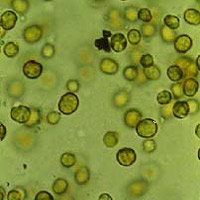
The reef-building corals can be identified by their stony skeletons made of calcium carbonate. A coral colony consists of thousands of individual coral animals, each similar in appearance to a small sea anemone with its base attached to a calcareous cup. Corals are armed with a ring of tentacles used to capture zooplankton from the surrounding water. Reef-building corals also contain symbiotic algae, called zooxanthellae, within their tissues. These single-cell algae have a mutualistic association with the coral hosts, a relationship that benefits both partners. The algae utilize carbon dioxide and nitrogen-based waste products released from the coral. In return, the algae perform photosynthesis, producing sugars and amino acids. These products are transported to the coral in support of its nutritional needs.
Hydrozoa
- Hydrozoans include fire corals
- Two species of fire coral live in Florida waters
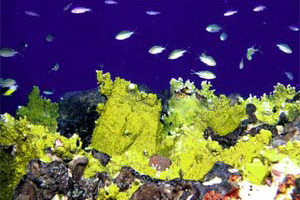
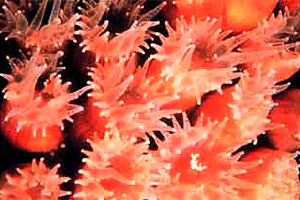
Milleporina, commonly referred to as fire corals, are hydrozoans. They are common throughout the Caribbean and Atlantic reefs with two species found in Florida waters: Milliporina alcicornis, a branching form, and Milliporina complanta, a bladed form. Fire coral is named for the nematocyst-containing defensive and food capturing polyps. Nematocysts contain a coiled barb, trigger, and neurotoxin. Upon stimulation, the trigger shoots the barb, which releases the neurotoxin upon entering the prey or predator.
Anthozoa
Anthozoans consist of several subclasses including:
- Octocorallia – soft corals
- Zoantharia – stony corals
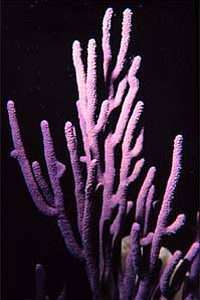
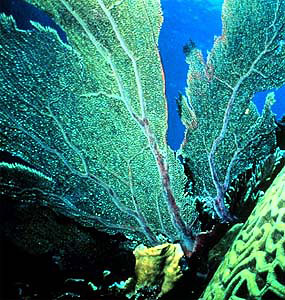
Anthozoans include soft corals, gorgonians, stony corals, and anemones. The subclass Octocorallia consists of the soft corals including gorgonians. On Florida’s reefs, soft corals are common in various forms ranging from encrusting mats to large sea fans. Gorgonians, including sea fans, sea plumes, and sea rods, are well-adapted to wave action with flexible skeletal materials and strong holdfasts that attach to the bottom substrate. Zoantharia includes the order Scleractinia, the stony corals. These corals are distinguished by a stony, calcareous skeleton. Each coral polyp is enclosed in a calcium carbonate cup-like structure. These cups are cemented together, forming a coral colony of thousands or millions of polyps.
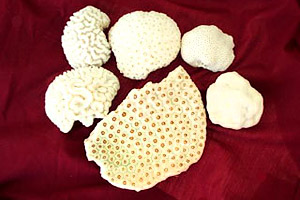
These polyps are withdrawn during the day, opening up at night to feed on zooplankton. During the day, the symbiotic algae located in the coral tissues, carry out photosynthesis. The algae release some of the compounds produced via photosynthesis to the host, while receiving nutrients from the coral in the form of waste products including ammonia and phosphates. Both symbiont and host benefit in this mutualistic association.
Glossary terms on page
- tropical: tropical zone lies between 23.5 degrees north and south of the equator, has small seasonal changes in temperature and large seasonal changes in precipitation.
- calcium carbonate: compound consisting of calcium and carbonate with a chemical structure of CaCO3.
- coralline algae: algae that secrete calcium carbonate in their tissues. Hard, encrusting, red coralline algae are significant reef builders in some areas.
- algae: a diverse group of photosynthetic organisms that lack roots, stems, leaves, and vascular tissues.
- calcareous: containing characteristics of calcium carbonate, calcium, or limestone.
- mutualistic: mutually beneficial association between two species, where both gain an increase in overall fitness.
- photosynthesis: process of making chemical compounds using light for the energy, plants get their energy from photosynthesis by using chlorophyll converted with carbon dioxide and water to produce carbohydrates and release oxygen.
- amino acids: the 20 smaller units that are the building blocks from which proteins are made.
- substrate: the material upon or within an organism lives or grows, including soil, plants, animals and rocks.
- polyp: an individual of a solitary cnidarian or one member of a cnidarian colony.
